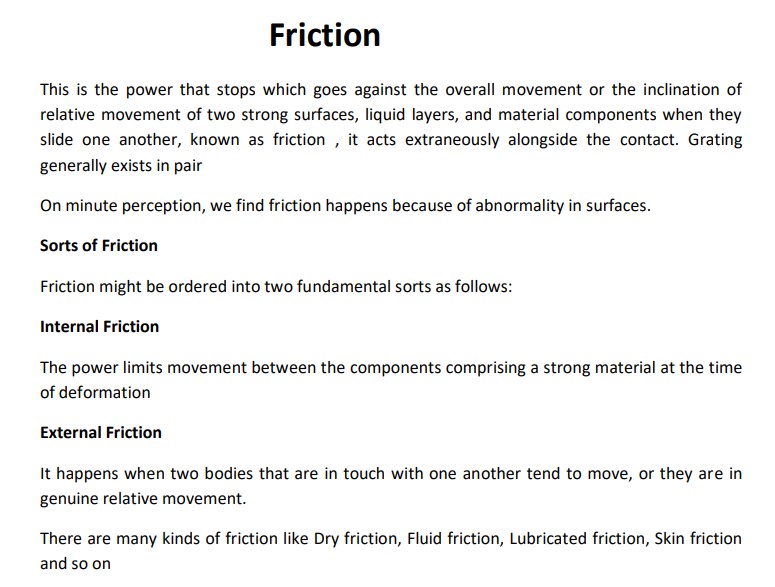The Science of Friction
Summary:
The Science of Friction explains that Friction is the force that opposes or hinders the motion or relative movement between two solid surfaces, liquid layers, or material components in contact. It arises due to surface irregularities. Friction can be categorized into internal friction, which limits movement within a solid material during deformation, and external friction, which occurs between bodies in contact and tends to resist motion.
There are various types of friction, including dry friction, fluid friction, lubricated friction, and skin friction. Dry friction, also known as external friction, can be further classified into static friction, limiting friction, and dynamic friction. Static friction prevents the relative motion of non-moving solid surfaces, while dynamic friction occurs between moving surfaces.
The laws of static friction state that the maximum static frictional force is independent of the contact area between surfaces and is proportional to the normal force. The value of static friction is variable and self-adjusting. Limiting friction refers to the maximum force of static friction when a body is about to start moving. Its force is determined by the coefficient of static friction and the normal reaction.
Excerpt:
The Science of Friction
Friction
This is the power that stops, which goes against the overall movement or the inclination of relative movement of two strong surfaces, liquid layers, and material components. When they slide one another, known as friction, it acts extraneously alongside the contact. Grating generally exists in pairs.
On minute perception, we find friction happens because of abnormality in surfaces.
Sorts of Friction
Friction might be ordered into two fundamental sorts as follows:
Internal Friction
The power limits movement between the components comprising a strong material at the deformation time.
External Friction
It happens when two bodies that are in touch with one another tend to move, or they are in genuine relative movement.
There are many kinds of friction like Dry friction, Fluid friction, Lubricated friction, Skin friction and so on.


Reviews